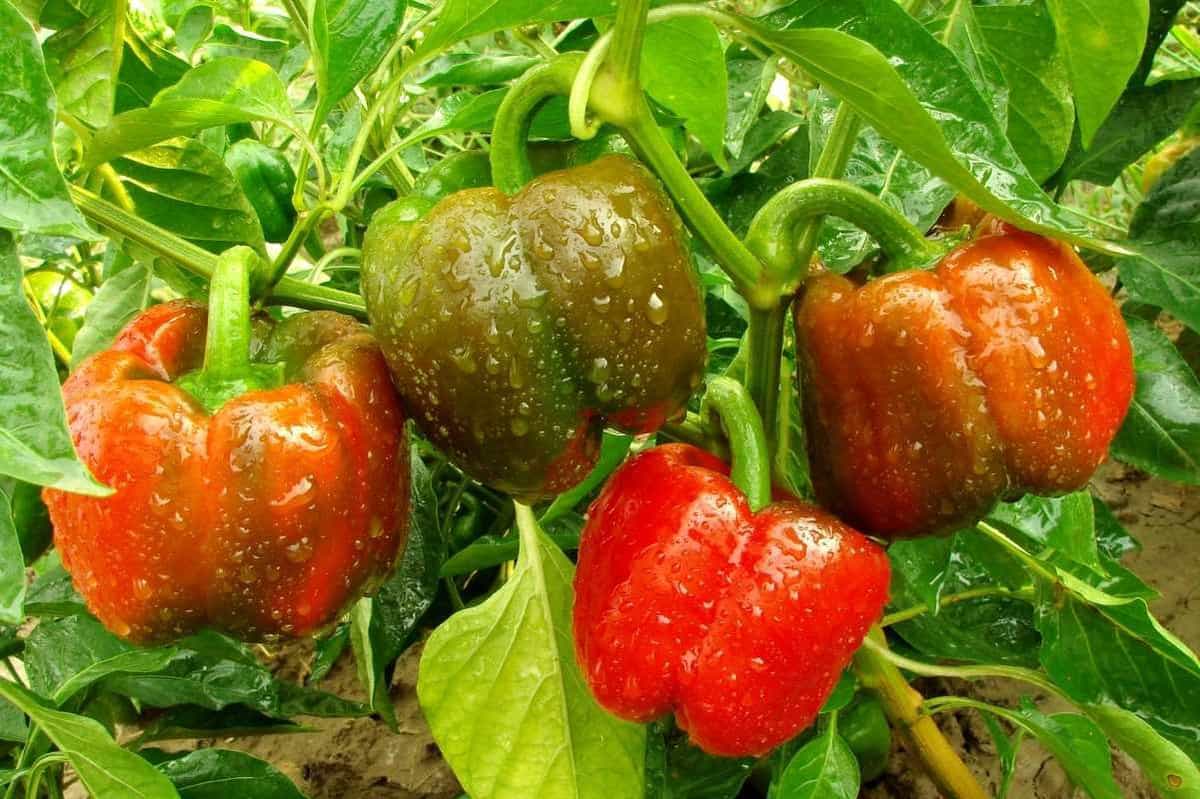Companion plants for peppers can help deter harmful insects, limit plant diseases, and boost plants’ flavor. Let’s talk companion planting!
Companion planting is one of the best methods you can use in your organic garden for keeping plants healthy and strong! Pepper plants can be a bit finicky to grow, and interplanting them with the best companion plants is a great way to help your peppers. Here are our recommendations for the best companion plants for pepper plants.
Table of Contents
What is companion planting?
Companion planting is the practice of putting plants near each other in the garden so that they can benefit each other. Instead of the traditional full row or bed of peppers, for example, you interplant the peppers with other vegetables, herbs, and flowers.
Different companion plants will provide different benefits to each other. They may deter pests, attract beneficial insects, suppress weeds, prevent diseases, or make the space more efficient. When you companion plant, you are giving your plants their own little support networks.

Why should I try companion planting?
Companion planting is one of the easiest methods of organic gardening. Just plant certain vegetables and herbs near each other, and let the magic happen! If you do it right, you’ll see fewer pests, better flavor, and increased production.
What are the BEST companion plants for peppers?
Our absolute favorite companion plants for peppers are any plants in the allium family—garlic, onions, scallions, chives, leeks, etc. Why? Well, the allium family is both strongly scented to help repel insects and has antimicrobial compounds that can help you avoid disease infestations. Bonus: these compact onion and leek family plants can fit nicely between the spaces between peppers.
Growfully Protip
Cowpeas like black-eyed peas can work well as a living mulch and studies have shown this living mulch can improve the growth and production of peppers.
What are other good companion plants for peppers?
While there are many options for pepper companion planting, these are our top great companion plants for peppers:

- Basil. Basil’s strong smell can mask peppers from a wide variety of pests such as thrips, aphids, spider mites, tomato hornworms, and armyworms.
- Calendula. Calendula can attract beneficial insects, reducing pest pressure and increasing pollination.
- Carrots. Carrots attract parasitic wasps to control tomato hornworms and other pests.
- Cucumber. Cucumber plants can work as living mulch beneath pepper plants. The cucumber leaves help with weed management and soil moisture retention. Cucumbers can sprawl widely, so make sure you have enough space for this pairing.
- Hot peppers around bell peppers. Hot cherry peppers at the edge of the garden bed can work as a trap crop for pepper maggots to protect a bell pepper crop.
- Lemon balm. Lemon balm serves double duty as a companion plant. It both repels insects and serves as a natural antimicrobial that reduces fungal and bacterial diseases.
- Marigold. These beautiful fluffy-looking flowers have a strong scent that both attracts pollinators and confuses insects so they can’t find your pepper plants.
- Mint. Mint attracts parasitic wasps that attack tomato worms. Mint can be invasive, so we recommend planting it in a container rather than directly in the garden bed.
- Nasturtiums. Nasturtiums repel a wide variety of pests, including aphids and whiteflies.
- Oregano, parsley, rosemary, and thyme. These strongly-scented herbs attract parasitic wasps, which help control pests.
- Radishes. Radishes can serve as a trap crop for flea beetles that would otherwise munch on your pepper plants.
- Squash. Just like cucumbers, squash can work as green mulch below pepper plants and help with weed suppression and soil moisture levels. Make sure you have enough space to allow the squash to sprawl.
What are bad companions for peppers?

- Broccoli, cabbage, cauliflower, Brussel sprouts, and other brassicas. Members of the brassica family will compete for the same nutrients as peppers, and both brassicas and peppers are heavy feeders.
- Eggplants, tomatoes, potatoes, and other nightshades. Peppers are a member of the nightshade family, and nightshades can share the same bacterial and fungal diseases among themselves. Avoid planting nightshades together.







